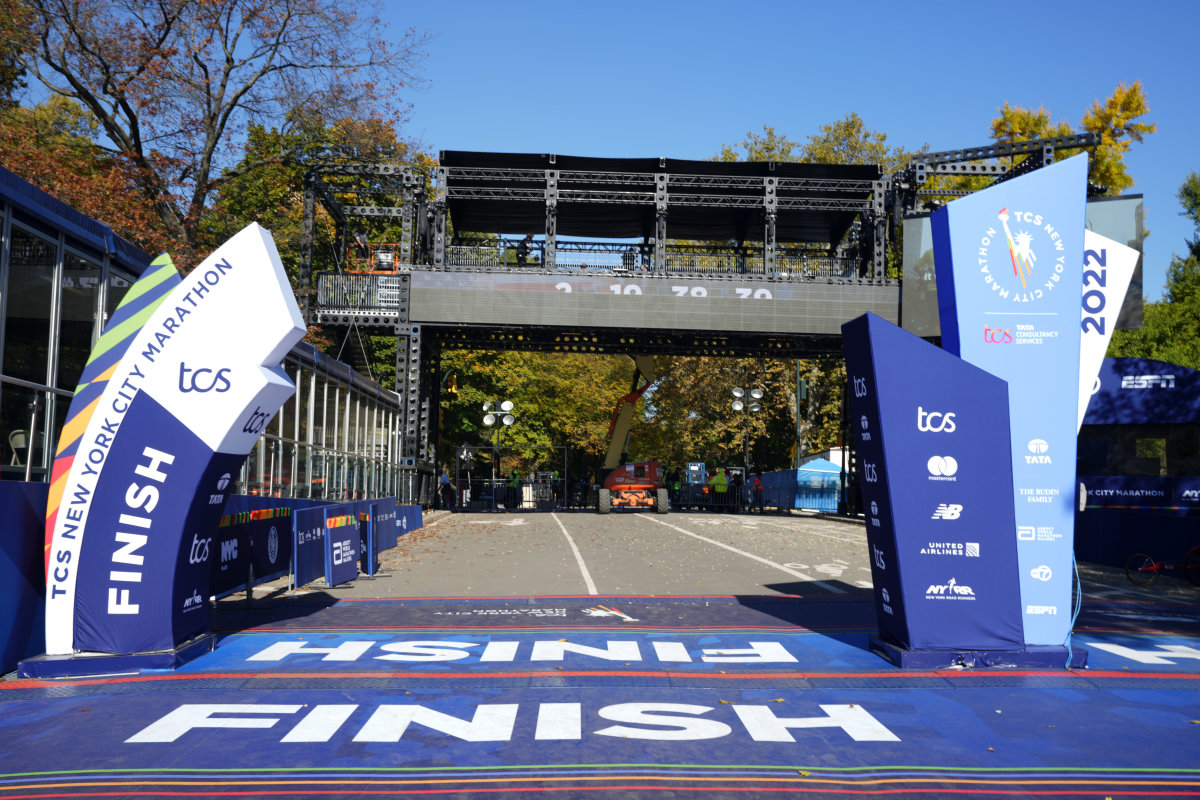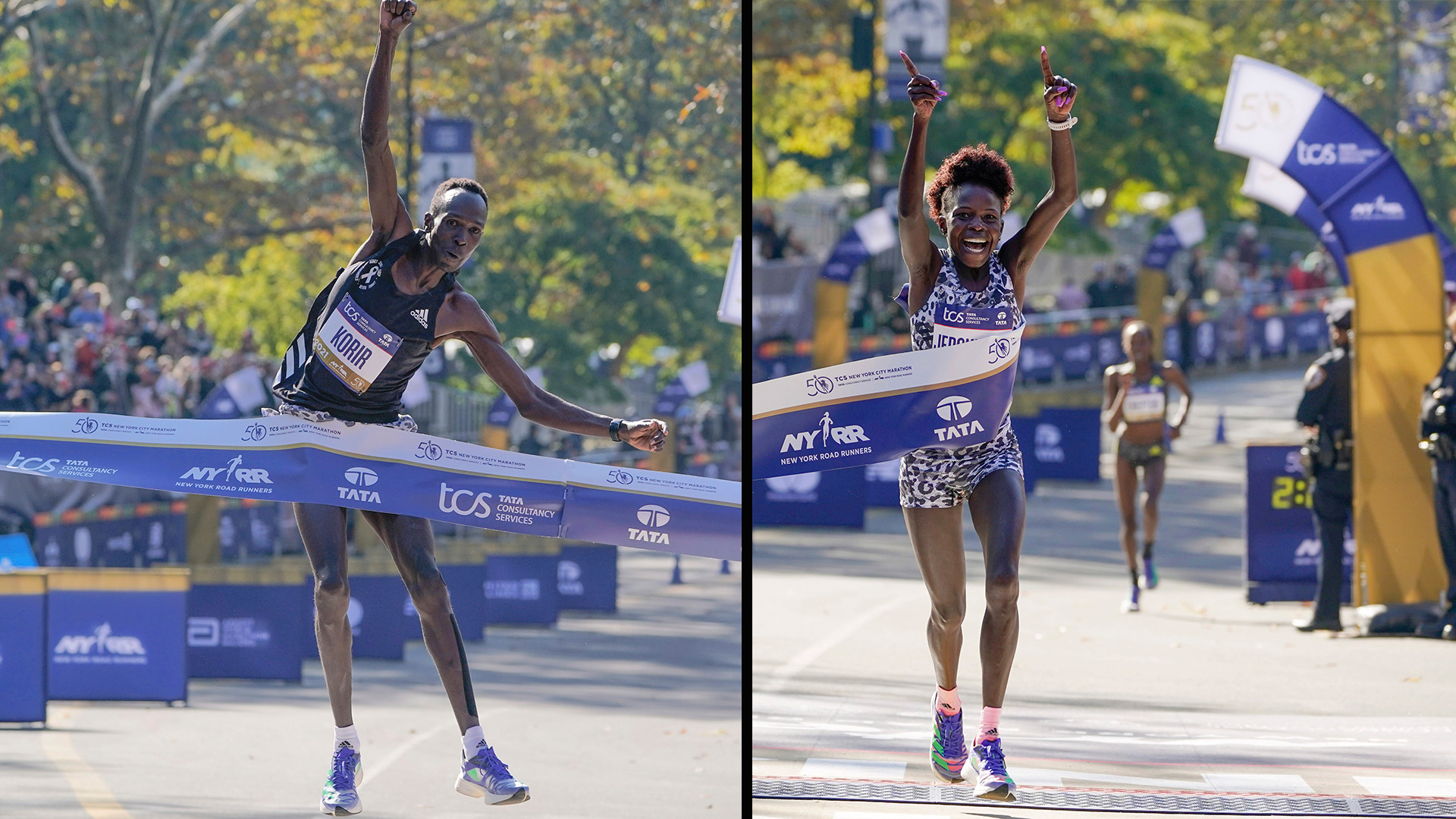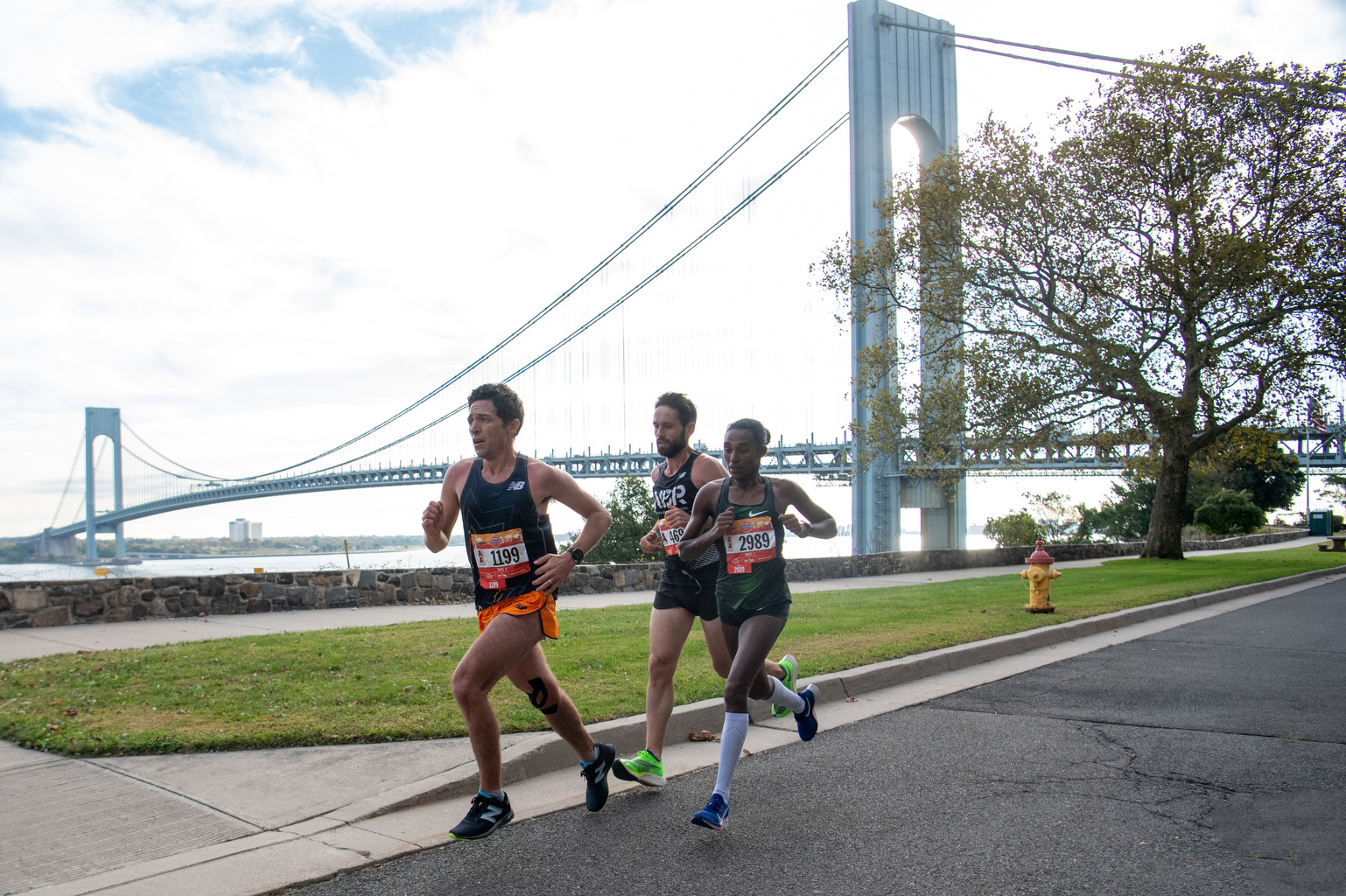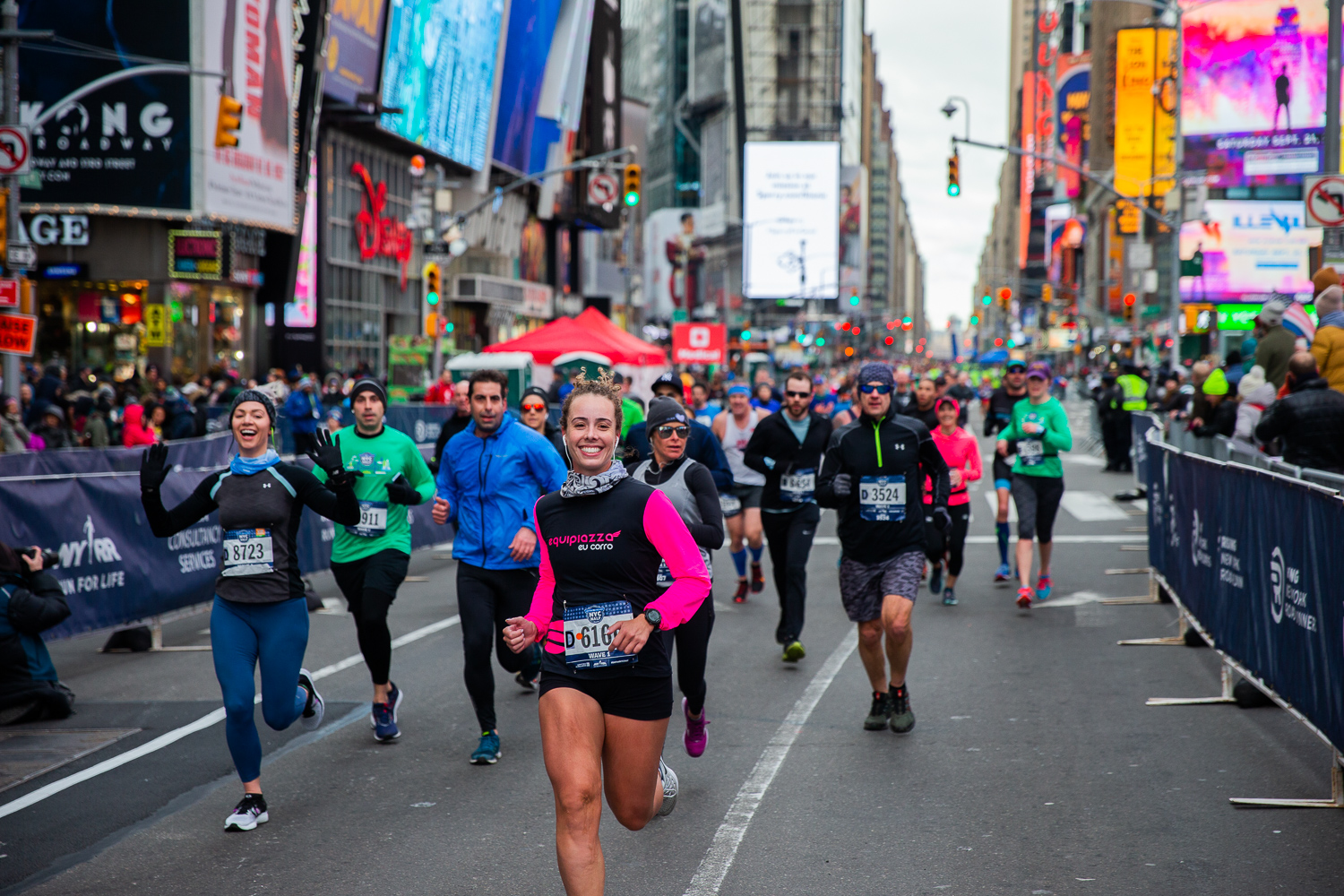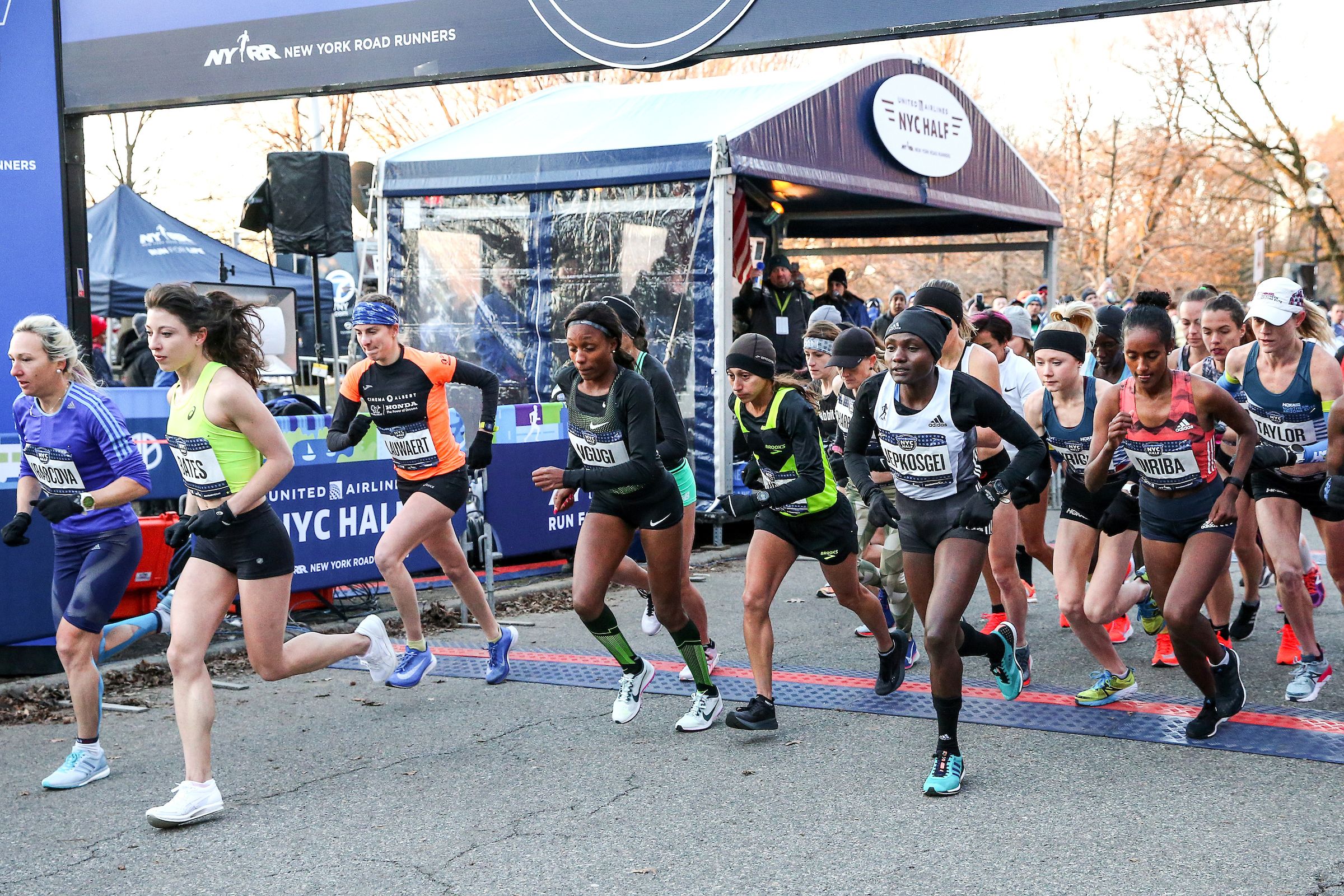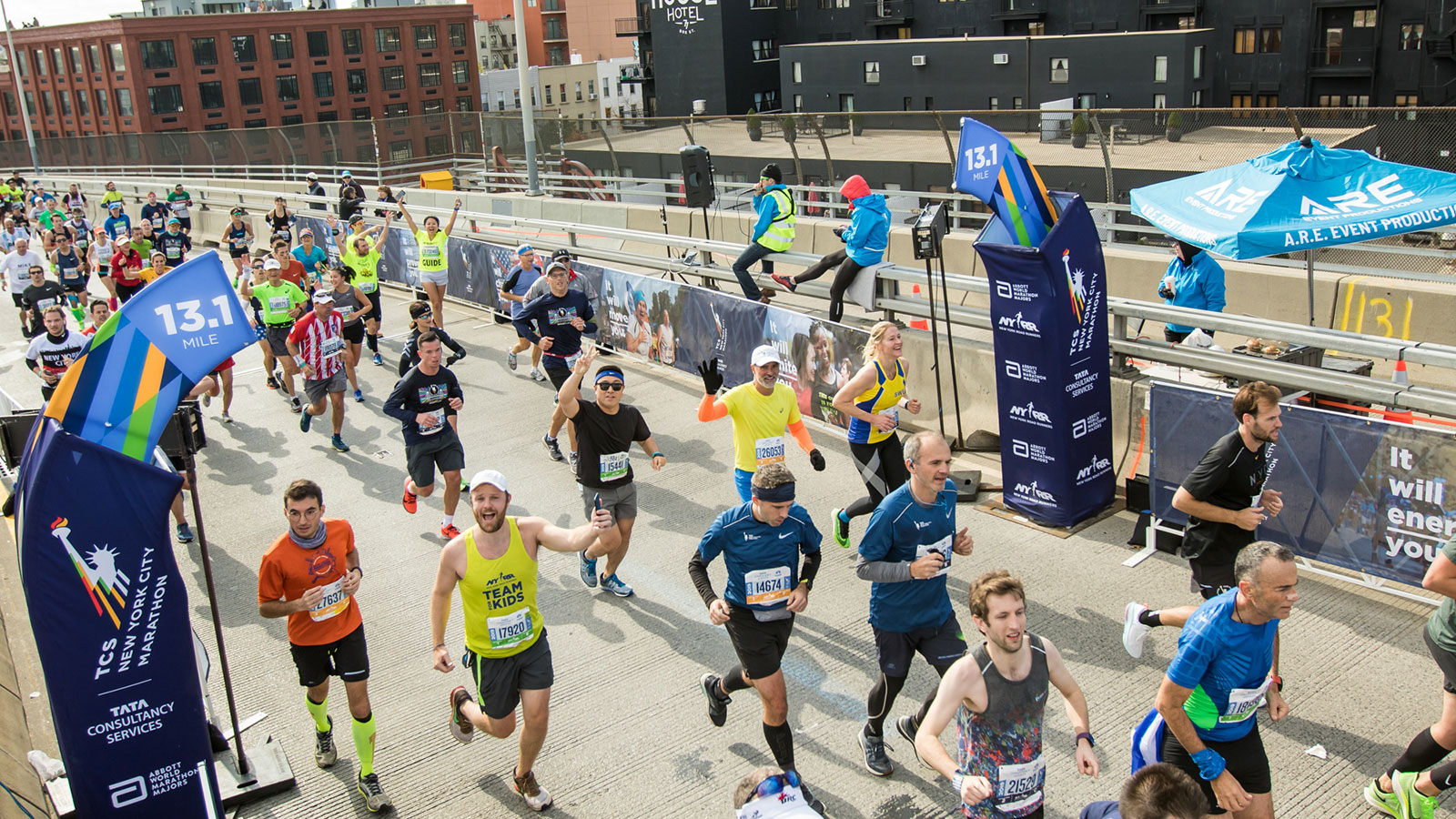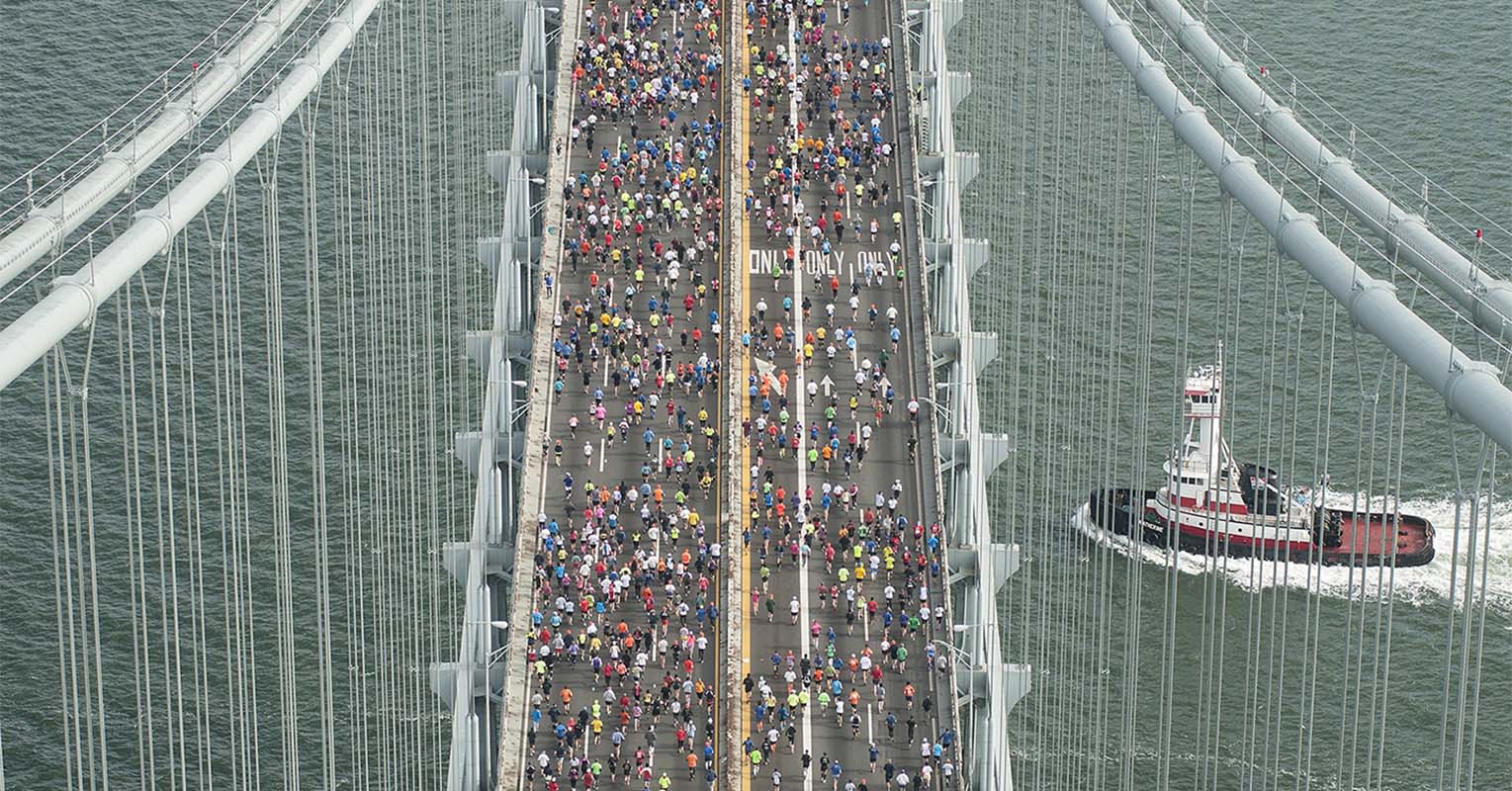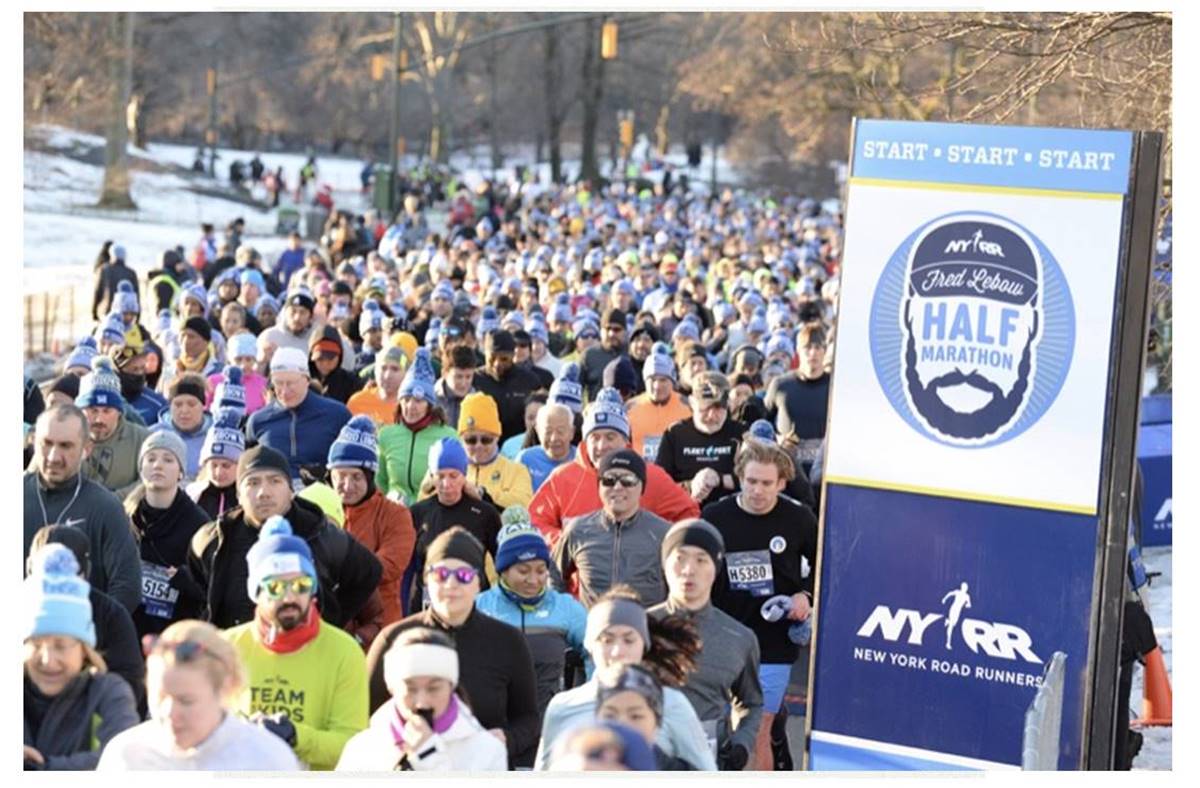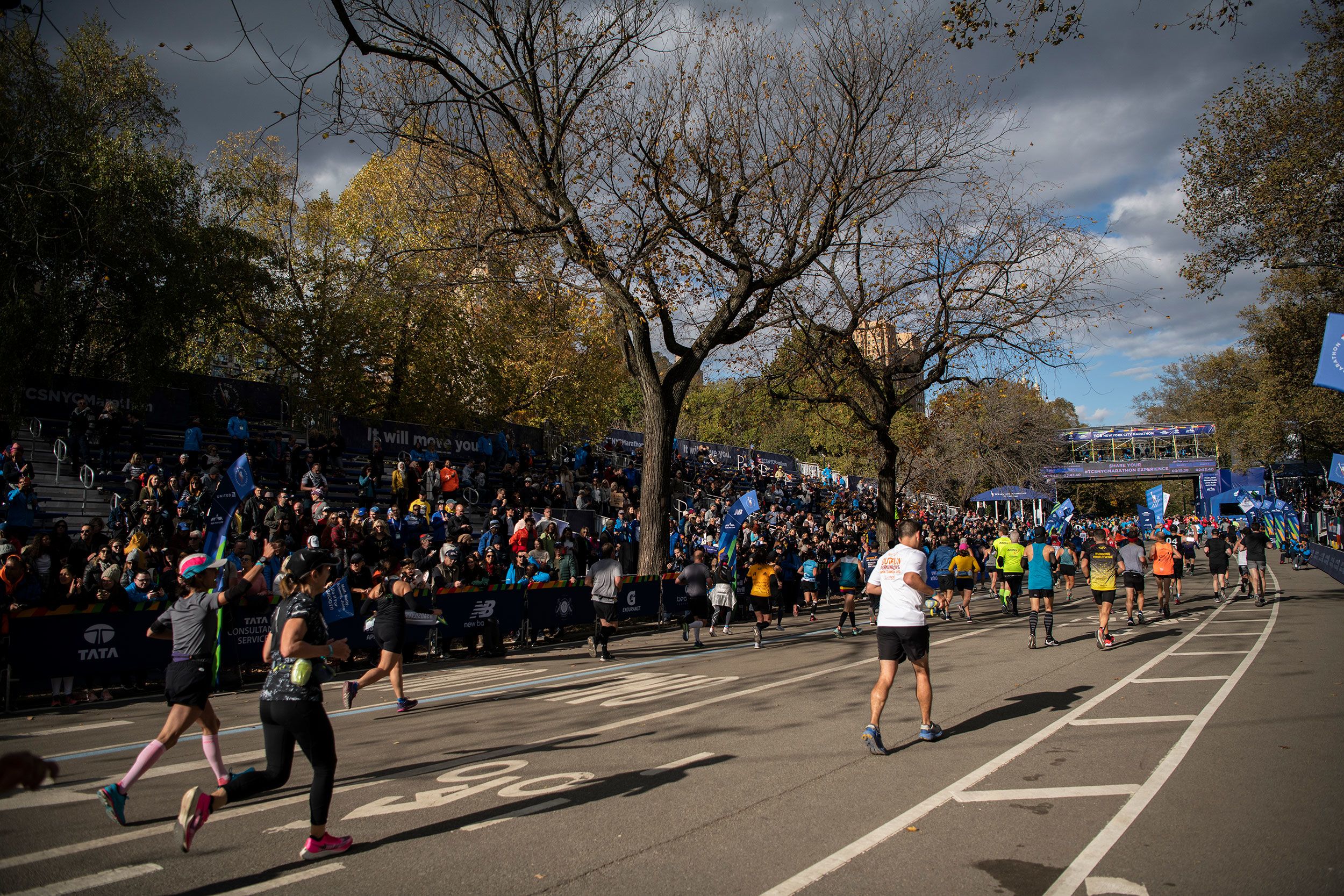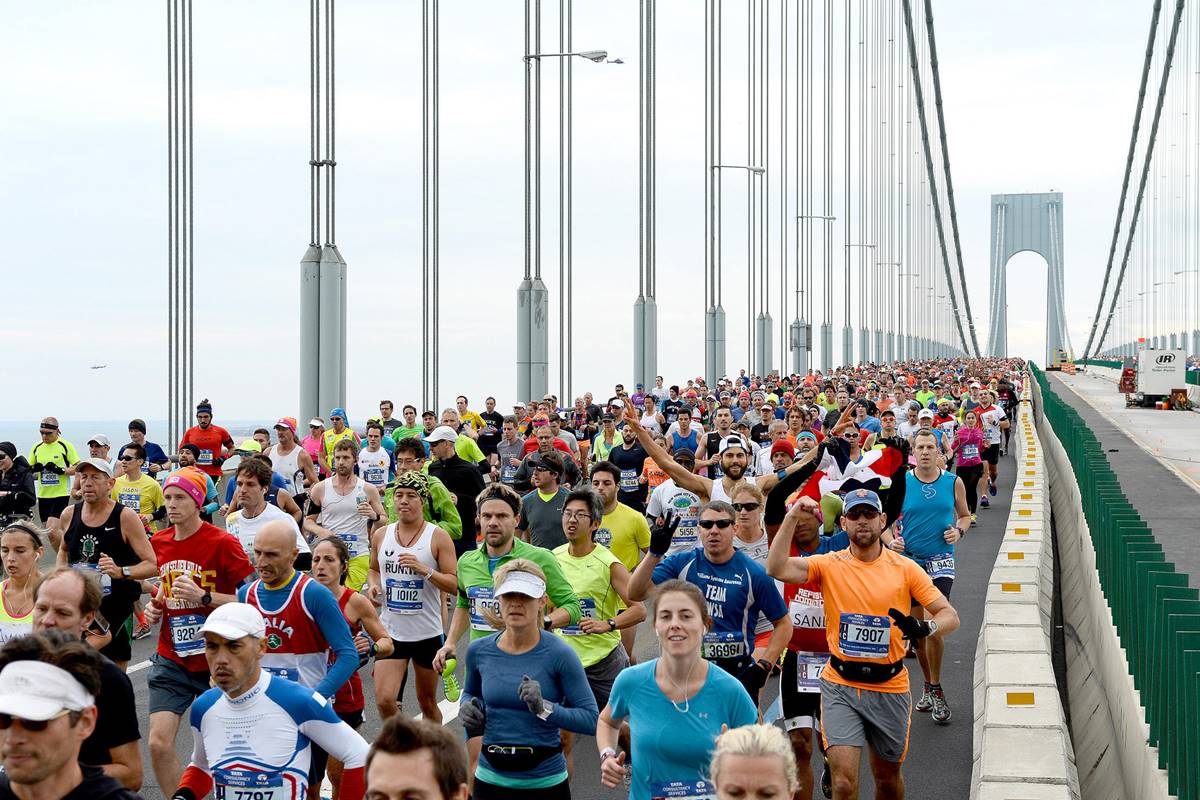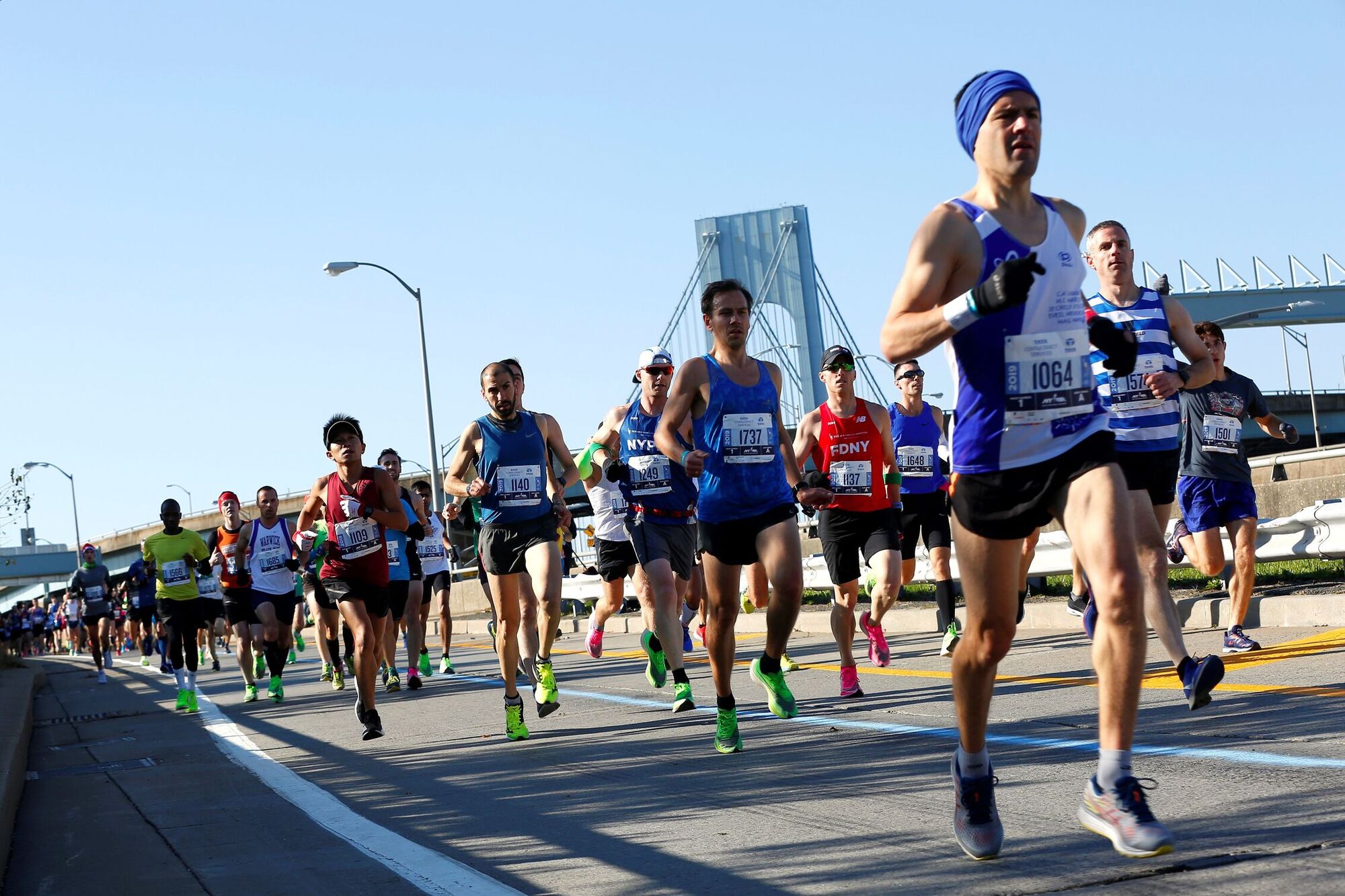

Featured
How To Get Into New York Marathon
Modified: January 22, 2024
Learn how to get featured in the New York Marathon and achieve your dream of running in one of the world's most prestigious races.
Introduction
Running a marathon is a remarkable feat of endurance and determination. And when it comes to marathons, few races are as iconic and sought after as the New York Marathon. Every year, thousands of runners from around the world flock to the streets of the Big Apple to take part in this legendary race. Whether you’re a seasoned runner or a novice looking for a new challenge, the New York Marathon offers an experience like no other.
The New York Marathon, also known as the TCS New York City Marathon, is one of the world’s largest and most prestigious marathons. It takes place annually on the first Sunday in November and covers all five boroughs of New York City. With its scenic routes, energetic crowd support, and electrifying atmosphere, the New York Marathon truly embodies the spirit of the city that never sleeps.
In this article, we will guide you through the process of getting into the New York Marathon and provide tips for training and preparation. Whether you dream of crossing the finish line in Central Park or simply want to soak up the vibrant atmosphere of this incredible event, we’ve got you covered.
From understanding the qualifying standards to navigating the application process, from training and preparation tips to race day etiquette, we will provide you with all the information you need to make your New York Marathon experience a success. So, lace up your running shoes and let’s dive into the world of the New York Marathon!
Training for the New York Marathon
Training for the New York Marathon requires a combination of physical endurance, mental strength, and careful preparation. Whether you’re a seasoned runner or new to long-distance running, here are some key tips to help you train effectively for the race.
1. Build a Solid Base: Before diving into marathon-specific training, it’s important to establish a solid running foundation. Gradually increase your weekly mileage by incorporating regular runs, long runs, and cross-training activities such as cycling or swimming. This will help improve your overall endurance.
2. Follow a Training Plan: Utilize a structured marathon training plan that includes a mix of easy runs, tempo runs, long runs, and rest days. The plan should gradually increase your mileage and incorporate specific workouts to improve speed, strength, and endurance.
3. Incorporate Speed Work: To improve your pace, include speed work sessions such as interval training, fartleks, and tempo runs. These workouts help build your cardiovascular fitness and teach your body to sustain a faster pace for longer periods.
4. Long Runs and Simulated Race Conditions: Ideally, your training should include several long runs that simulate marathon conditions. This will allow you to test your fueling strategy, practice pacing, and build mental resilience for the actual race.
5. Nutrition and Hydration: Fuel your body with a balanced diet that includes carbohydrates, proteins, and healthy fats. During long runs, practice your race-day fueling strategy by consuming energy gels, sports drinks, or other preferred nutrition sources. Hydration is also crucial, so ensure you drink enough water throughout your training.
6. Rest and Recovery: Don’t overlook the importance of rest and recovery. Allow your body time to adapt and repair by incorporating rest days into your training schedule. Listen to your body and address any injuries or discomfort promptly to prevent them from worsening.
7. Mental Preparation: The New York Marathon is not just a physical challenge; it’s also a mental journey. Practice mental strategies such as positive self-talk, visualization, and goal-setting to develop the mental toughness needed to push through difficult moments during the race.
Remember, everyone’s training journey is unique. Adjust your training plan to fit your individual needs, taking into account your current fitness level and any previous injuries or health concerns. Be consistent, stay motivated, and trust the process. With dedication and proper training, you’ll be well-prepared to conquer the New York Marathon!
Setting a Race Strategy
Running the New York Marathon requires careful planning and strategizing to ensure a successful race day. Here are some key considerations to help you set a race strategy that aligns with your goals and capabilities.
1. Pace Yourself: One of the most crucial aspects of a successful marathon is pacing. Find a pace that is comfortable yet challenging for your current fitness level. Avoid starting too fast and burning out early in the race. It’s better to start conservatively and gradually increase your pace as the race progresses.
2. Familiarize Yourself with the Course: The New York Marathon course is known for its rolling hills and iconic landmarks. Study the course map and elevation profile to identify sections where you may need to adjust your pace or conserve energy. Incorporate training runs with similar terrain to get a feel for what to expect on race day.
3. Fueling and Hydration: Develop a fueling and hydration plan based on what works best for your body. Practice your race-day nutrition strategy during long training runs to fine-tune your choices and timing. Take advantage of the aid stations along the course and replenish fluids and energy as needed.
4. Mental Strategies: Prepare yourself mentally for the challenges of the marathon. Break the race into smaller segments and focus on one mile or landmark at a time. Visualize yourself crossing the finish line and draw inspiration from the crowd support and fellow runners. Stay positive and remind yourself of the hard work you’ve put into training.
5. Adjustments for Weather: The New York Marathon takes place in November, which means varying weather conditions are to be expected. Keep a close eye on the weather forecast leading up to race day. Adjust your race strategy accordingly, considering factors such as temperature, humidity, wind, and precipitation.
6. Be Flexible: While it’s important to have a race strategy, be prepared to adjust it if needed. Listen to your body during the race and make necessary adaptations. If you’re feeling strong, you may decide to push the pace a bit. If you’re experiencing fatigue or discomfort, slow down and focus on maintaining a steady, consistent effort.
7. Enjoy the Experience: The New York Marathon is not only a race but also a celebration of the human spirit and the city itself. Embrace the incredible atmosphere, interact with fellow runners and spectators, and take in the sights and sounds of New York City. Remember to smile and enjoy the journey!
Setting a race strategy will greatly contribute to your overall marathon experience. Consider your goals, fitness level, and the conditions of the event. With a well-thought-out race plan, you’ll be setting yourself up for success on the streets of New York.
Registering for the New York Marathon
Registering for the New York Marathon is the first step towards achieving your dream of running in this prestigious race. Here is a guide to help you navigate the registration process and secure your spot on the starting line.
1. Dates and Deadlines: The New York Marathon registration typically opens several months before the race. Keep an eye on the official event website for the exact registration launch date. It’s important to note that the race has a limited number of spots available, so it’s best to register as early as possible to increase your chances of securing a spot.
2. Eligibility Requirements: To register for the New York Marathon, you must meet certain eligibility criteria. These include age requirements, completion of a qualifying race, or participation in the race as a charity runner. Make sure you understand the eligibility requirements before starting the registration process.
3. Lottery System: The New York Marathon uses a lottery system to allocate a certain number of spots to registered participants. If the demand exceeds the available spots, a lottery drawing will take place to determine who gets in. If you’re not selected in the lottery, there are still other options to secure a spot, such as charity entry or international tour groups.
4. Charity Entry: Running for a charity is an excellent way to secure a spot in the New York Marathon while making a positive impact. Many charities offer guaranteed entry in exchange for fundraising a specific amount. Research and reach out to charities that resonate with you to learn about their entry requirements and fundraising commitments.
5. International Tour Groups: Another option to secure a spot in the New York Marathon is through international tour groups. These groups offer travel packages that include race entry, accommodations, and other amenities. While these packages may come at a higher cost, they provide a hassle-free way to participate in the race and explore the city.
6. Travel and Accommodations: If you’re traveling from outside of New York City, consider your travel arrangements and accommodations. The race typically attracts a large number of participants and visitors, so it’s advisable to book your accommodations early to secure the best options and prices.
7. Stay Informed: Keep yourself updated with the latest news and updates regarding the registration process. Follow the official New York Marathon website and social media channels for announcements and important dates.
Registering for the New York Marathon is an exciting and competitive process. Plan ahead, understand the different options available, and be prepared for the possibility of participating through the lottery, charity entry, or international tour groups. Remember, securing a spot is just the beginning of your incredible journey to the New York Marathon.
Navigating the Application Process
The New York Marathon application process may seem daunting, but with some guidance and preparation, you can navigate it smoothly. Here are some key steps to help you successfully complete the application process.
1. Create an Account: Start by creating an account on the official New York Marathon website. Provide your contact information, including name, email address, and phone number. This account will be used throughout the application process.
2. Personal Information: Fill out the personal information section, including your date of birth, gender, and nationality. Make sure to enter accurate and up-to-date information to avoid any issues later in the process.
3. Qualifying Standards: If you’re applying based on meeting qualifying standards, provide the necessary details, such as the name and date of the qualifying race, your finish time, and any required documentation. Check the official race website for the specific qualifying standards and ensure that your qualification is valid for the New York Marathon.
4. Lottery Entry: If you’re applying through the lottery process, indicate your interest in the lottery entry option. Keep in mind that this does not guarantee a spot but enters you into the lottery pool for a chance to be selected.
5. Charity Entry: If you’re running for a charity, select the charity entry option and proceed with the additional requirements stated by the respective charity. This often involves committing to a fundraising goal and submitting supporting documents to confirm your participation.
6. Payment: Once you have completed all the required information, you’ll need to make a payment. The registration fee for the New York Marathon can vary, so check the official race website for the current fee and accepted payment methods. Be sure to complete the payment within the specified timeframe to secure your application.
7. Confirmation: After submitting your application and payment, you’ll receive a confirmation email acknowledging your submission. Keep this email for reference and future communication regarding your application status.
After completing the application process, the waiting game begins. If you’re successful in the lottery or if your charity entry is accepted, you’ll receive notification with further instructions. If you are not selected or if you chose another entry option, consider alternative paths such as joining an international tour group to secure your spot.
It’s important to stay informed and regularly check your email and the official race website for updates on the application process. Be prepared to provide any additional information or documentation if required. Patience and perseverance are key in navigating the application process for the New York Marathon.
Qualifying Standards and Requirements
The New York Marathon has specific qualifying standards and requirements that participants must meet in order to secure entry into the race. Here is a breakdown of the qualifying standards and the necessary criteria to participate in this prestigious event.
1. Guaranteed Entry for Time Qualifiers: One of the ways to secure entry into the New York Marathon is by meeting the qualifying time standards. These time standards vary depending on the age and gender of the participant. The official race website provides a detailed breakdown of the qualifying times for each age group. It’s important to note that meeting the qualifying time does not guarantee entry, as spots are still limited and subject to availability.
2. Verified Finish Time: To qualify based on a previous marathon or half marathon, participants must have completed the race within a specific time frame. The finish time must be verified, and proof of completion must be provided during the application process. Accepted forms of verification include official race results or certificates that display the participant’s name, race name, date, and finish time.
3. Qualifying Period: The qualifying standards typically require participants to achieve the qualifying time within a specific period before the New York Marathon. It’s crucial to check the official race website for the designated qualifying period, as it may vary from year to year.
4. Wheelchair Qualifiers: Wheelchair athletes must meet separate qualifying standards based on previous marathon performances. These standards ensure a fair and competitive field of athletes in the wheelchair division.
5. Age Categories: The qualifying standards for the New York Marathon are divided into various age categories, with different time requirements for each category. It’s essential to review the age categories and corresponding qualifying times that apply to your specific age group.
6. International Qualifiers: For international participants who wish to qualify for the New York Marathon, the race recognizes specific marathons around the world as qualifying races. These races have been evaluated and deemed eligible for international qualifiers, allowing participants to meet the necessary time standards to apply for the New York Marathon.
Meeting the qualifying standards is a significant achievement and a testament to an individual’s commitment and training. It’s important to verify the eligibility requirements and ensure that the qualifying time is achieved within the designated period. Keep in mind that the qualifying standards are subject to change, so regularly check the official race website for updates and any changes to the requirements.
For individuals who do not meet the qualifying standards or prefer other entry options, there are alternative paths to participate in the New York Marathon, such as entering the lottery or running for a charity. These options provide opportunities for runners of all abilities to be part of this remarkable event.
Lottery and Guaranteed Entry Options
For those who don’t meet the New York Marathon’s qualifying standards or prefer other entry options, there are alternative paths to secure a spot in this highly sought-after race. Here’s an overview of the lottery and guaranteed entry options available.
1. Lottery Entry: The New York Marathon uses a lottery system to allocate a certain number of spots to registered participants. If you enter the lottery, your name will be drawn at random, giving you a chance to secure an entry. However, participation in the lottery does not guarantee a spot due to the high demand for race entries. The lottery drawing typically takes place a few months before the race.
2. NYRR Club Membership: Members of the New York Road Runners (NYRR) club gain access to an exclusive lottery for the New York Marathon. This increases the odds of securing an entry, as the club lottery has fewer participants than the general lottery. Joining the NYRR club provides additional benefits, such as race discounts and exclusive club events.
3. Charity Entry: Running for a charity is another way to guarantee entry into the New York Marathon. Many official charity partners offer guaranteed entries in exchange for fundraising a specific amount of money. This gives participants the opportunity to support a cause they’re passionate about while fulfilling their dream of running the New York Marathon. Contact the official race website or the respective charities for more information on how to secure a charity entry.
4. International Tour Groups: For international participants, joining an international tour group offers a guaranteed entry into the New York Marathon. These tour packages typically include race entry, accommodations, transportation, and additional amenities. While this option may come with a higher cost, it provides convenience and a unique travel experience along with participating in the prestigious race.
5. 9+1 Program: The New York Road Runners 9+1 program provides a guaranteed entry opportunity for runners who complete nine qualifying races and volunteer for one NYRR event in the calendar year leading up to the New York Marathon. This program helps runners actively participate in the NYRR community and secure entry to the marathon.
6. International Travel Partner Entry: The New York Marathon partners with international travel agencies that offer race entry as part of their marathon travel packages. These packages typically include accommodations, transportation, and additional benefits. Check the official race website for a list of authorized international travel partners.
It’s important to research and understand the requirements, financial commitments, and deadlines associated with each entry option. Carefully consider which option aligns with your personal preferences, goals, and circumstances in securing a spot for the New York Marathon.
Whether through the lottery, charity entry, NYRR club membership, or international tour groups, these alternative entry options provide runners from various backgrounds and abilities with a chance to be part of the New York Marathon, ensuring an inclusive and diverse field of participants.
Running for a Charity
Running the New York Marathon for a charity is a meaningful and fulfilling way to participate in this iconic race. By fundraising for a cause you care about, you not only have the opportunity to cross the finish line but also make a positive impact on the lives of others. Here’s what you need to know about running for a charity in the New York Marathon.
1. Choose a Charity: Start by selecting a charity that resonates with your values and passions. Consider causes that are close to your heart and that you’re willing to dedicate your time and energy to support. The official New York Marathon website provides a list of official charity partners to choose from.
2. Fundraising Commitment: Each charity typically has a fundraising commitment that participants must meet in order to secure a spot in the marathon. The commitment amount varies by charity and may depend on factors such as the size and significance of the charity’s presence in the race. Ensure that you understand and are comfortable with the fundraising commitment before making a commitment to run for a specific charity.
3. Fundraising Strategies: Once you’ve committed to running for a charity, you’ll need to come up with a fundraising plan. Reach out to friends, family, and colleagues for support, leveraging social media platforms and online fundraising tools. Organize fundraising events, seek corporate sponsorships, and explore matching gift programs to maximize your fundraising efforts.
4. Charity Support: Charities typically provide resources and support to help participants meet their fundraising goals. This can include personalized fundraising webpages, fundraising guides, training support, and promotional materials. Take advantage of these resources to enhance your fundraising campaign and engage potential donors.
5. Training and Support: Many charities offer training programs and support for their runners. These programs can include access to experienced coaches, training schedules, group runs, and valuable tips for marathon preparation. Take advantage of these resources to ensure you’re physically and mentally prepared for the race.
6. Impact and Recognition: Running for a charity extends beyond the race itself. As you raise funds and create awareness for your chosen cause, you have the opportunity to make a significant impact. Many charities recognize and celebrate their runners’ achievements through special events, team gear, and exclusive race day perks.
Running for a charity adds an extra layer of meaning and motivation to your New York Marathon experience. Beyond personal accomplishment, you are part of a community working towards positive change. Whether you’re passionate about healthcare, education, environmental causes, or social justice, running for a charity allows you to make a difference while achieving your marathon goals.
Remember that fundraising takes time and effort, so start early and be persistent. With the support of a charity and the generosity of your network, you can contribute to a cause you care about and create lasting impact through your participation in the New York Marathon.
Training and Preparation Tips
Training for the New York Marathon requires dedication, consistency, and proper preparation. Here are some valuable tips to help you train effectively and be well-prepared for the race day:
1. Follow a Training Plan: Utilize a structured training plan that includes a mix of easy runs, long runs, tempo runs, and rest days. Gradually increase your mileage and incorporate specific workouts to improve speed, strength, and endurance. Tailor your plan to your fitness level and goals.
2. Build a Base: Before starting marathon-specific training, establish a solid running foundation. Gradually increase your weekly mileage by incorporating regular runs and long runs. This helps improve your overall endurance and prepares your body for the demands of marathon training.
3. Incorporate Strength Training: Don’t neglect strength training as it can help improve your running form and prevent injuries. Focus on exercises that target the major muscle groups used in running, such as core exercises, squats, lunges, and hip/glute exercises.
4. Cross-Train: Incorporate cross-training activities such as cycling, swimming, or yoga into your training routine. This helps to improve cardiovascular fitness, strengthen different muscle groups, and prevent overuse injuries. Choose activities that complement your running and provide variety in your training.
5. Fuel Your Body: Maintain a balanced and nutritious diet to provide your body with the necessary energy for training. Focus on consuming carbohydrates, proteins, healthy fats, and a variety of fruits and vegetables. Hydrate properly throughout the day, both during training sessions and in everyday life.
6. Practice Your Race Nutrition Strategy: Experiment with different fueling options during long training runs to find what works best for you. Test energy gels, sports drinks, or other nutrition sources to ensure they provide the necessary fuel and don’t cause any stomach issues. Practice your race-day nutrition strategy during your longest training runs.
7. Simulate Race Conditions: As you get closer to race day, incorporate training runs that simulate race conditions. Run on similar terrain and practice your pacing, hydration, and fueling strategies. This helps you mentally and physically prepare for the challenges you may face during the marathon.
8. Rest and Recovery: Don’t underestimate the importance of rest and recovery in your training plan. Allow your body time to recover and adapt to the demands of training. Get adequate sleep, incorporate rest days into your schedule, and listen to your body. Address any aches or pains promptly to prevent them from turning into injuries.
9. Mental Preparation: Train your mind as well as your body. Use positive self-talk, visualization, and goal-setting techniques to develop mental toughness and stay focused during training and on race day. Seek support from fellow runners, join training groups, or enlist the help of a running coach to stay motivated and accountable.
10. Practice Race-Day Logistics: Familiarize yourself with the logistics of race day, such as transportation to the start line, bag drop-off, and pre-race routines. Plan your race-day outfit and test it during your long training runs to ensure comfort and avoid any surprises on race day.
Remember, everyone’s training journey is unique. Listen to your body, adjust your training plan as needed, and trust in the process. With dedication, consistency, and smart training, you’ll be well-prepared to conquer the challenges of the New York Marathon.
Gear and Equipment for the Marathon
Proper gear and equipment are essential for a successful and comfortable marathon experience. Here are some key considerations when choosing your gear for the New York Marathon:
1. Running Shoes: Invest in a pair of well-fitting running shoes that provide adequate support and cushioning. It’s important to choose shoes that are suitable for your foot type and running style. Consider visiting a specialized running store for a professional fitting and recommendation.
2. Socks: Opt for moisture-wicking socks made of synthetic materials or merino wool. These socks help keep your feet dry and reduce the risk of blisters. Avoid cotton socks as they retain moisture and can cause discomfort.
3. Apparel: Dress comfortably and consider the weather conditions on race day. Choose lightweight and breathable technical fabrics that wick away sweat and provide ventilation. Layers are recommended, as you can remove or add them if needed. Don’t forget to wear a hat or visor and apply sunscreen to protect yourself from the sun.
4. GPS Watch or Running App: Track your distance, pace, and time with a reliable GPS watch or running app. This can help you monitor your progress during training and keep you on target during the marathon. Ensure that your watch or app is fully charged and ready on race day.
5. Race Belt or Fuel Belt: Consider using a race belt or fuel belt to conveniently carry your race essentials such as energy gels, a small water bottle, and other necessary items. This keeps your hands free and ensures easy access to fuel throughout the race.
6. Hydration System: Stay hydrated during the marathon by utilizing a handheld water bottle, a hydration pack, or relying on the aid stations along the course. Practice using your preferred hydration system during training to become comfortable with carrying and accessing fluids on the go.
7. Energy Gels or Fuel: Test different energy gels or fuel sources during your long training runs to determine what works best for you. These provide a quick source of carbohydrates to fuel your muscles and maintain energy levels during the marathon. Experiment with various flavors and brands to find what suits your taste and digestion.
8. Body Glide or Anti-Chafing Products: Apply body glide or anti-chafing products to problem areas prone to chafing, such as underarms, thighs, or nipples. This reduces friction and prevents discomfort and potential injuries during the race.
9. Recovery Gear: Consider investing in recovery gear such as foam rollers, massage balls, or compression socks to aid in post-race recovery. These tools can help reduce muscle soreness and promote faster recovery after the marathon.
Remember, it’s important to test and become comfortable with your gear and equipment during your training runs. Avoid wearing anything new or untested on race day to prevent discomfort or unforeseen issues. Following these gear and equipment guidelines will help ensure that you have a comfortable and enjoyable marathon experience.
Accommodations and Travel Plans
When preparing for the New York Marathon, it’s essential to plan your accommodations and travel arrangements well in advance. Here are some considerations to help you make the most of your stay in New York City:
1. Location: Choose accommodations that are conveniently located near the race start or along the marathon route. This will minimize travel time and allow for easy access on race day. Popular areas to consider include midtown Manhattan or the neighborhoods of Brooklyn and Queens along the course.
2. Booking Early: The New York Marathon attracts a large number of participants and spectators, so it’s crucial to book your accommodations early. Hotels in the vicinity of the race tend to fill up quickly. Consider making your reservation as soon as you secure your spot in the marathon to secure the best options.
3. Amenities: Take into consideration the amenities offered by the hotel or accommodation. Look for options that offer early breakfasts, late checkout, or access to fitness centers to accommodate your race-day needs. Some hotels may also provide shuttle services to the race start, which can be a convenient perk.
4. Room Sharing: Consider sharing a room with other runners or friends to reduce costs and enhance the overall marathon experience. Not only does sharing accommodations lessen expenses, but it also provides additional motivation and support during the marathon journey.
5. Transportation: Plan your transportation to and from New York City. Consider the nearest airports and available transportation options, such as taxis, ride-sharing services, or public transportation. Research the marathon’s official guidelines regarding transportation to the start line, as special arrangements may be in place on race day.
6. Race Expo: The New York Marathon Expo typically takes place a couple of days before the race and is where participants collect their race packets. Ensure your travel plans allow for enough time to attend the expo and take advantage of the various exhibitors and merchandise available.
7. Sightseeing and Entertainment: Take advantage of your time in New York City to explore and enjoy the vibrant atmosphere. Plan additional days before or after the race to visit iconic landmarks, museums, and experience the city’s culinary delights. Be mindful of balancing sightseeing with rest and recovery, especially in the days leading up to the race.
8. Stay Informed: Stay updated with any travel advisories, local regulations, or changes in transportation services that may affect your accommodations and travel plans. Monitor the race website and official communication channels for any updates or changes regarding the New York Marathon logistics.
Planning your accommodations and travel arrangements early will ensure a smooth and enjoyable experience during your time in New York City for the marathon. Consider your budget, preferences, and proximity to race-related activities when making these arrangements. By taking care of these logistics, you can focus on performing your best on race day and making lasting memories in the vibrant city of New York.
Race Day Tips and Etiquette
Race day at the New York Marathon is an exhilarating experience, and proper race day etiquette is essential to ensure a smooth and enjoyable event for all participants. Here are some race day tips to help you navigate the marathon and maintain good sportsmanship:
1. Arrive Early: Plan to arrive at the race start area well in advance to allow for any unexpected delays. This will provide ample time for bag drop-off, using the facilities, warming up, and mentally preparing for the race. Follow the provided schedule and be aware of any specific instructions or designated meeting points.
2. Follow Race Officials’ Instructions: Pay attention to and follow the instructions provided by race officials, volunteers, and event staff. They are there to ensure the safety and organization of the race. Familiarize yourself with the rules and regulations beforehand to avoid any unnecessary misunderstandings on race day.
3. Be Courteous to Fellow Runners: Treat your fellow runners with respect and kindness. Avoid cutting across or obstructing other runners’ paths. Stay to the right when running and be mindful of those around you. Offer words of encouragement and support to fellow runners, especially during challenging moments.
4. Pace Yourself: Start the race at a pace that is comfortable for you and aligns with your race strategy. Allow faster runners to pass if needed and avoid sudden stops or abrupt changes in direction. Be mindful of your pace and maintain a consistent effort throughout the race.
5. Hydration and Fueling: Make use of the aid stations along the course for hydration and fueling. Be considerate of other runners when grabbing water or sports drinks to avoid collisions or spills. Dispose of your cups and energy gel wrappers properly in the designated trash area near the aid stations.
6. Respect Local Residents and Spectators: Show respect and gratitude to the local residents and spectators who come out to support the runners. Avoid littering in residential areas and express appreciation for their encouragement along the course. Follow any instructions from event staff or local authorities and respect the privacy of the residents.
7. Personal Safety: Pay attention to your surroundings and be mindful of potential hazards along the course, such as curbs, potholes, or uneven surfaces. If you need to slow down or stop, move to the side to avoid obstructing other runners. If you encounter a medical issue or require assistance, seek help from a race official or medical volunteer.
8. Celebrate and Enjoy: Remember to celebrate and enjoy the experience. Soak up the atmosphere, high-five spectators, and take in the iconic landmarks. Smile for the race photographers and relish the accomplishment of running the New York Marathon.
By following these race day tips and demonstrating good sportsmanship, you can contribute to a positive and inclusive race experience for all participants. Embrace the camaraderie of the marathon and appreciate the support from spectators and volunteers along the way. Let the excitement and energy of race day carry you to the finish line!
Enjoying the New York Marathon Experience
The New York Marathon offers more than just a race; it’s an unforgettable experience that celebrates the spirit of running and the vibrancy of New York City. Here are some tips to help you fully enjoy the New York Marathon experience:
1. Soak Up the Atmosphere: Immerse yourself in the energy and excitement of race day. Take in the sights and sounds of the city as you make your way through the five boroughs. Appreciate the cheering crowds and the support from fellow runners and spectators. Let the electrifying atmosphere carry you through the race.
2. Embrace the Iconic Landmarks: The New York Marathon offers a unique opportunity to run past some of the most iconic landmarks in the world. Whether it’s the Verrazzano-Narrows Bridge, Central Park, or the bustling streets of Brooklyn, take a moment to appreciate these landmarks as you pass by. Capture memorable photos or simply savor the experience.
3. Interact with Spectators: Engage with the enthusiastic spectators along the course. High-five cheering spectators, acknowledge their signs of encouragement, and listen to the inspiring cheers. Their support can provide an added boost of motivation when you need it most. Show gratitude and appreciation for their presence and support.
4. Connect with Other Runners: The New York Marathon brings together runners from all over the world. Take the opportunity to connect with other participants before, during, and after the race. Share stories, exchange tips, and foster a sense of camaraderie among fellow runners. Engage in conversations and create memories together.
5. Enjoy the Music and Entertainment: The New York Marathon is known for its vibrant music and entertainment along the course. Appreciate the live bands, DJs, and performers who line the streets, adding to the festive atmosphere. Let the beats and melodies uplift your spirits and keep you motivated throughout the race.
6. Capture the Memories: Bring a small camera or your smartphone to capture photos along the course. Document your personal journey and the unique moments you experience during the marathon. Snap shots of the iconic landmarks, the cheering crowds, and the fellow runners who inspire you. These pictures will serve as a lasting reminder of your New York Marathon experience.
7. Reflect and Celebrate: Take a moment to reflect on your journey and celebrate your accomplishments. Pause after crossing the finish line to soak up the realization of what you have achieved. Be proud of your efforts, the commitment to training, and the dedication to reaching the finish line. Take in the sense of fulfillment and celebrate your success!
The New York Marathon is not just about the distance covered; it’s about embracing the entire experience and creating memories that will last a lifetime. Take the time to savor every moment, from the anticipation at the start line to the exhilaration of crossing the finish line. Cherish the camaraderie, support, and the uniqueness of the event. Run, celebrate, and enjoy every step of your New York Marathon journey.
Post-Race Recovery and Celebration
Congratulations on completing the New York Marathon! Your accomplishment deserves celebration and proper recovery to recharge your body and mind. Here are some post-race recovery tips and ideas for celebrating your achievement:
1. Rest and Rehydrate: After crossing the finish line, take the time to rest and recover. Sit down, stretch, and allow your body to cool down. Rehydrate with fluids containing electrolytes to replenish the nutrients lost during the race. Listen to your body and give it the rest it needs to recover.
2. Gentle Movement and Stretching: Engage in light movement and gentle stretching to aid in the recovery process. Focus on loosening tight muscles and improving blood circulation. Incorporate dynamic stretches and foam rolling to help alleviate muscle soreness and prevent stiffness.
3. Refuel with Nutritious Food: Treat yourself to a well-deserved post-race meal that includes a balance of carbohydrates, proteins, and healthy fats. Choose nutrient-rich foods to aid in muscle recovery and repair. Enjoy the local cuisine and savor the flavors of New York City.
4. Ice Baths and Cold Compressions: Consider taking an ice bath or using cold compressions to reduce inflammation and minimize muscle soreness. Cooling down the muscles can help speed up the recovery process. If an ice bath is not accessible, try applying cold compressions to specific areas of soreness.
5. Professional Massage or Physiotherapy: Treat yourself to a professional massage or physiotherapy session to help alleviate muscle tension and promote recovery. Seek the assistance of a licensed therapist who specializes in sports recovery. These sessions can aid in faster healing and rejuvenation.
6. Reflect and Journal: Take time to reflect on your marathon experience. Write down your thoughts, emotions, and significant moments leading up to and during the race. Capture the highlights, challenges, and lessons learned. Journaling can be a powerful way to commemorate your achievement.
7. Share Your Experience: Share your marathon experience with friends, family, and fellow runners. Swap stories, insights, and advice. Connect with the running community through social media or online forums. Celebrate your achievement as part of a larger network of passionate runners.
8. Plan Future Goals: Use the post-race period to set new goals and plan future races. Reflect on your New York Marathon experience and identify areas of improvement or new challenges you’d like to take on. Choose your next race or running goal and start the journey towards it with renewed motivation.
9. Commemorate with Memorabilia: Consider purchasing or collecting race memorabilia to commemorate your New York Marathon experience. This can include finisher medals, race shirts, or customized souvenirs. These items serve as tangible reminders of your achievement and can be displayed proudly.
10. Celebrate!: Lastly, celebrate your accomplishment! Whether it’s organizing a small gathering with friends and family, treating yourself to a well-deserved indulgence, or simply taking a moment to revel in your achievement, acknowledge and appreciate the hard work, dedication, and perseverance that got you to the finish line.
Post-race recovery and celebration are important parts of your New York Marathon journey. Take the time to rest, reflect, and reward yourself for the incredible achievement of completing a marathon. Embrace the memories and use this accomplishment as inspiration for future goals and adventures.
Conclusion
The New York Marathon is a race that captures the hearts and minds of runners worldwide. From the rigorous training to the exhilarating race day experience, participating in this iconic event is a dream come true for many. Throughout this article, we have explored various aspects of preparing for and enjoying the New York Marathon.
We discussed the importance of training effectively, building a solid foundation, and following a well-structured plan. Setting a race strategy, understanding the qualifying standards, and exploring different entry options were also key points to consider. Additionally, we provided tips on race day etiquette, enjoying the atmosphere, and savoring the iconic landmarks of New York City.
Furthermore, we covered the significance of proper recovery and celebration after completing the marathon. Taking care of your body through rest, nourishment, and gentle movement is crucial for a speedy recovery. Commemorating your achievement and connecting with fellow runners can add to the post-race experience.
As you embark on your journey to the New York Marathon, remember to savor every moment. Embrace the challenges, appreciate the support, and celebrate your achievements along the way. Whether you’re aiming for a personal best or simply seeking to soak up the atmosphere, participating in the New York Marathon is a milestone worth pursuing.
So, lace up your running shoes, hit the pavement, and let the journey to the New York Marathon begin. With determination, dedication, and the tips provided in this article, you’ll be well-equipped to make the most of this incredible experience. Run strong, enjoy the ride, and may your New York Marathon adventure be one for the books!
